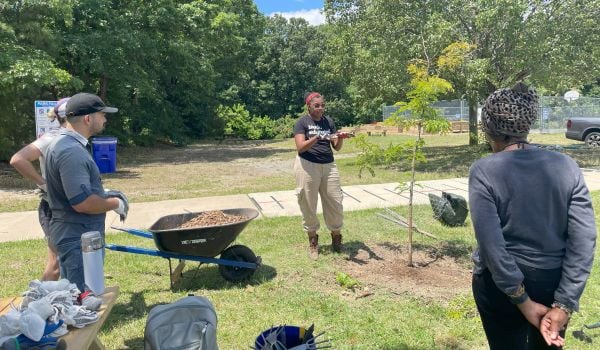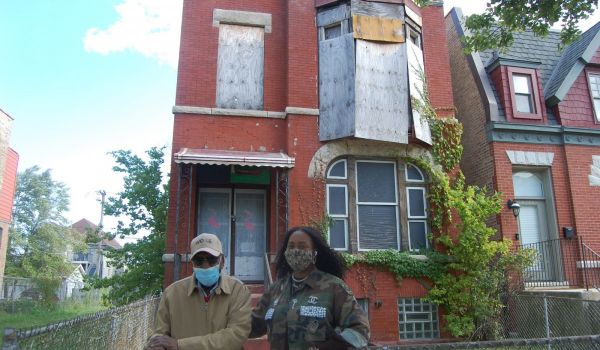The other day I was cruising down the highway when I clicked on the radio to the local classic rock station. Bruce Springsteen’s “Glory Days” was just finishing up as I slipped into that state of driver bliss so rare on these daily commutes.* Springsteen was followed by The Who, followed by U2. Right on. But the fourth song of the rotation nearly made me take out a Prius in the HOV lane.** Cinderella — as classic rock? Are you kidding me?!
Hey buddy, being old doesn’t make it classic.
The same is true for architecture, though here I substitute historic for classic. A recent article in The Economist troubles me in a similar way. No, the narrative of the article is much better than the lyrics of a Cinderella song. What troubles me is the subject: my own city of Tucson plans to designate such neighborhoods as Hoffman Park— with its 1950s ranch-style homes so common across the metro area — as a historic district on the National Register of Historic Places.

Tucson Ranch. Photo courtesy City of Tucson.
Or at least it’s seriously considering such a move. The city has commissioned a study to identify distinctive building and landscaping styles to help determine what qualifies. The 99-page report categorizes homes, neighborhoods, and landscaping into such typologies as Tucson Ranch (one story, one exterior wall material that is usually burnt adobe, low-pitched broadside gable roof with smooth white built-up sheathing), Postwar Territorial (one story, brick or slump block exterior walls, rectilinear or arched window openings), and Ornamental Desert (the desire to create visual impact with the more unusual and interesting plants of the Southwestern desert). In all, 304 post-World War II neighborhoods were identified.
Old: yes. Vernacular: certainly for that period of Tucson’s growth, yes. But historically significant, and warranting historic designation? Being old doesn’t make it historic.
But who’s to judge? Why should my opinion count any more than the DJ who insists on playing 1980s bubble-gum “metal” on our classic rock station?

Postwar Territorial. Photo courtesy City of Tucson.
Fortunately, designation in the National Register of Historic Places isn’t quite so subjective. Buildings and neighborhoods must generally be at least fifty years old. Additionally, the evaluation criteria are:
The quality of significance in American history, architecture, archeology, engineering, and culture is present in districts, sites, buildings, structures, and objects that possess integrity of location, design, setting, materials, workmanship, feeling, and association, and:
A. That are associated with events that have made a significant contribution to the broad patterns of our history; or
B. That are associated with the lives of persons significant in our past; or
C. That embody the distinctive characteristics of a type, period, or method of construction, or that represent the work of a master, or that possess high artistic values, or that represent a significant and distinguishable entity whose components may lack individual distinction; or
D. That have yielded or may be likely to yield, information important in prehistory or history.
Uh-oh: perhaps they are subjective. The real issue, however, may not be whether we should preserve these architectural and landscaping styles, but whether in preserving them we are avoiding a worse alternative. The Economist reports that Jonathan Mabry, Tucson’s historic preservation officer, “explains that Tucson wants to protect buildings from being torn down and replaced with ‘mini-dorms’ — cheaply made structures rented to students at the University of Arizona.”
Mabry notes, too, that the city “also hopes historic districts will foster a sense of community.” And perhaps they will, but I’d be much more supportive if the buildings and neighborhoods up for designation were comprised of truly unique, regional architecture. In other words, that they really were historically important, creating a sense of community from the get-go, not just because of a federal designation.
I suppose I like my classic rock straight up, and my historic districts that way, too. In the venerable words of the Boss:
Yeah, just sitting back trying to recapture
a little of the glory of, well time slips away
and leaves you with nothing mister but
boring stories of glory days
(chorus)
- I admit I commute 16 miles to work in a single-occupancy vehicle. It’s not that I’m opposed to carpooling or taking mass transit, but the former is ruled out because of my erratic schedule, and the latter because my “new urban” neighborhood still doesn’t have mass transit access. When I lived in Denver as well as Washington, D.C. I took mass transit — just for the record.
- Actually, it only made me scream and change the station — we have no HOV lanes in Tucson, and I like the Toyota Prius well enough, really.











